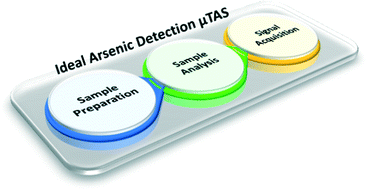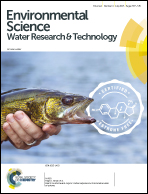Detection of trace arsenic in drinking water: challenges and opportunities for microfluidics
Abstract
Arsenic contamination of drinking water is a major global problem, with contamination in Bangladesh deemed most serious. Although the current World Health Organisation (WHO) maximum contamination limit (MCL) for arsenic in drinking water is 10 μg L−1, due to practical and economic constraints, the standard limit in Bangladesh and many other developing nations is 50 μg L−1. We propose that an ideal arsenic sensor, designed for routine monitoring, will have five essential qualities: sensitivity and selectivity for arsenic; speed and reliability; portability and robustness; reduced health and environmental risks; and affordability and ease of use for local technicians. It is our opinion that many of these characteristics can be accentuated by microfluidic systems. We describe candidate colorimetric, electrochemical, biological, electrophoretic, surface-sensing, and spectroscopic methods for arsenic detection; and comment on their potential for portable microfluidic adaptation. We also describe existing developments in the literature towards the ultimate creation of microfluidic total analysis systems (μTASs) for arsenic detection. The fundamental purpose of this review is to highlight the need for better portable arsenic contamination detection, and describe how microfluidic technology may be developed to address this need.


 Please wait while we load your content...
Please wait while we load your content...